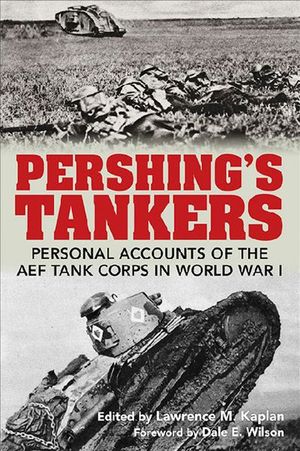Pershing's Tankers
Published by The University Press of Kentucky
“Compelling . . . highly recommended to students of the Great War or of armored force development.” —The Journal of America's Military Past
After the United States declared war against Germany in April 1917, the US Army established the Tank Corps to help break the deadlock of trench warfare in France. The army envisioned having a large tank force by 1919, but when the war ended in November 1918, only three tank battalions had participated in combat operations. Shortly after, Brigadier Gen. Samuel D. Rockenbach, chief of the American Expeditionary Forces (AEF) Tank Corps under Gen. John J. Pershing, issued a memorandum to many of his officers to write brief accounts of their experiences that would supplement official records. Their narratives varied in size, scope, and depth, and covered a range of topics, including the organizing, training, and equipping of the tank corps.
For the first time since these reports were submitted, Pershing's Tankers: Personal Accounts of the AEF Tank Corps in World War I presents an unprecedented look into the experiences of soldiers in the US Army Tank Corps. The book provides fresh insight into the establishment and combat operations of the tank corps, including six personal letters written by Col. George S. Patton Jr., who commanded a tank brigade in World War I. Congressional testimony, letters, and a variety of journal, magazine, and newspaper articles in this collection provide additional context to the officers’ revealing accounts. Based on completely new sources that include official US Army personnel reports previously unknown to researchers, this illuminating work offers a vivid picture of life and activities in the US Army Tank Corps in France; a rare glimpse into the thoughts and experiences of a broad cross-section of men from the senior leadership down to the platoon level; and a behind-the-scenes look at how this first generation of “tankers” helped develop new war-fighting capabilities for the US Army.
BUY NOW FROM
COMMUNITY REVIEWS

